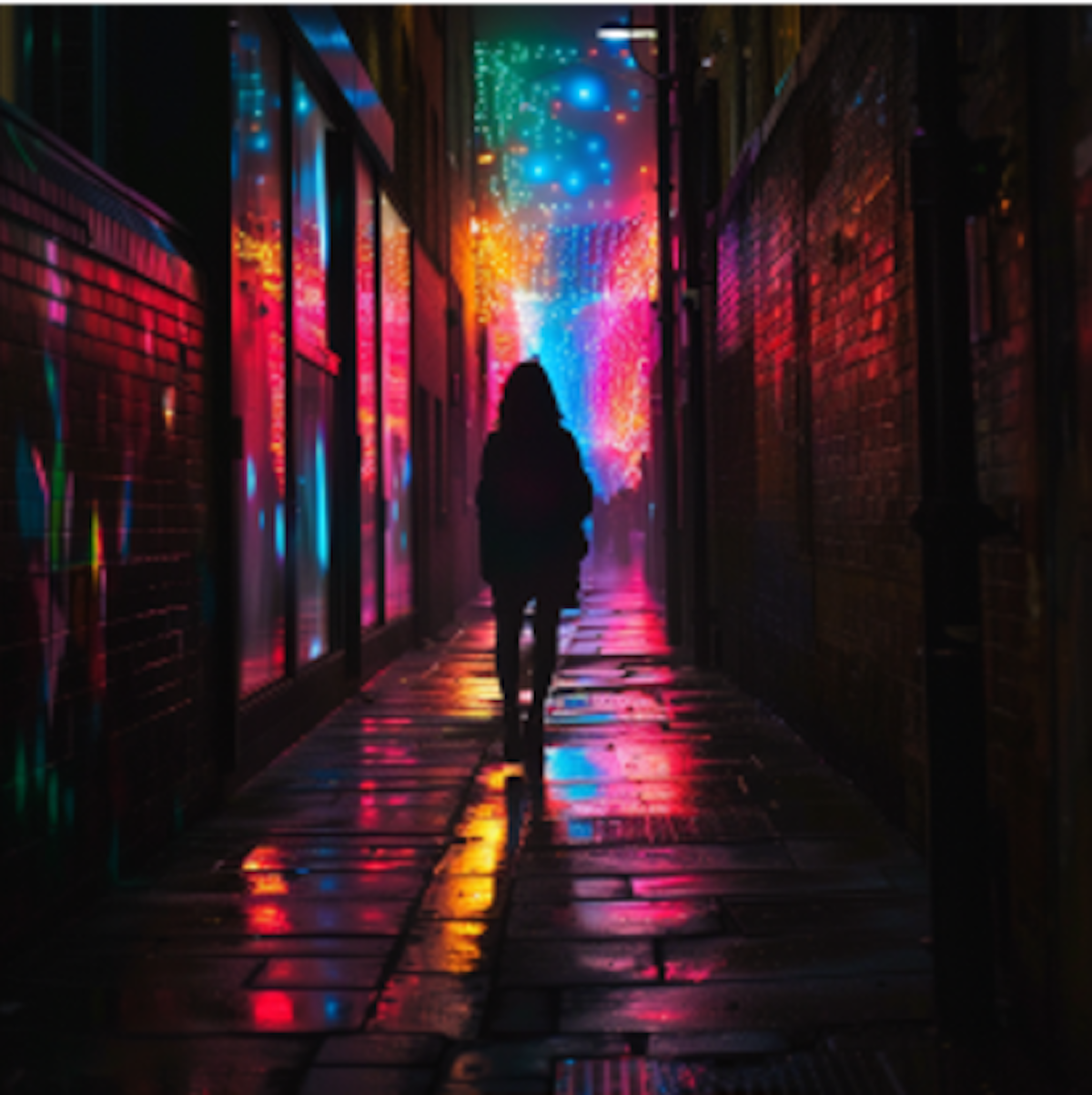
Creativity can be scary
There is a peculiar paradox in the corporate boardrooms, marketing departments, and brainstorming sessions: while creativity is lauded as the catalyst for innovation, it's often shunned in practice. It's easy to follow the well-trodden path, to emulate what competitors and industry leaders do. However, the journey into the unknown—breaking away from the norm, getting creative, and doing things differently—can be daunting and downright scary. Reading my other muses, I seem to focus on this a lot, but for bloody good reason: this leap into the creative abyss can be a business's most rewarding venture.
The Comfort of Conformity.
There's a certain allure to walking the beaten path in the business world. The logic is straightforward: if it works for the market leaders, it should work for us. This mindset, while practical in some respects, often leads to a landscape cluttered with imitations and slight variations of the same idea. The comfort in conformity is akin to a warm blanket on a cold night — reassuring but potentially stifling. It offers security but at the cost of innovation and distinctiveness. The fear of stepping out of line becomes more pronounced in such an environment. The risk of deviating from the norm involves potential failure and the anxiety of breaking away from the industry's gravitational pull.
The Fear Factor in Creativity.
Creativity in business is a double-edged sword; it holds immense potential but brings many fears. The most palpable is the fear of failure — what if this new idea flops? This fear is often compounded by the high stakes in corporate decision-making, where financial losses and reputational damage are real possibilities. Then, there's the fear of rejection within the organisation and the market. Innovative ideas can disrupt the status quo, leading to resistance from team members who prefer the familiar and scepticism from consumers accustomed to conventional offerings. Furthermore, creativity can mean venturing into uncharted territory without a roadmap, making the journey intimidating. It requires vision and the courage to stand alone against a potential tide of traditionalism.
Creativity brings successes and failures.
The business annals are filled with tales of creativity, leading to triumph and downfall. Apple's launch of the iPhone, a device that defied the norms of its time, is a classic example of creativity reaping spectacularly massive rewards. It revolutionised the smartphone industry and cemented Apple's reputation as an innovator. On the flip side, consider New Coke, Coca-Cola's attempt to revitalise its brand in the 1980s. Despite extensive research and a creative marketing push, the product was met with overwhelming public backlash, leading to a hasty return to the original formula. These cases illustrate two extremes of the creative spectrum in business. What sets them apart is the outcome and the approach: Apple's deep understanding of consumer desires versus Coca-Cola's misreading of its customer base. These examples highlight the nuanced balance between creative ambition and market reality.
These examples are well-known, I know, but it is worth reminding you to help make my case.
1. Netflix's Shift to Streaming: Netflix's transition from DVD rentals to streaming was a bold creative leap. It paid off spectacularly, turning the company into a dominant force in the entertainment industry.
2. Kodak's Digital Photography Miss: Kodak, despite inventing the digital camera, failed to capitalise on its creation, sticking with film. This reluctance to embrace its own innovative technology led to its downfall in the digital age.
3. Dyson's Bagless Vacuum Cleaner: James Dyson's invention of a bagless vacuum cleaner was initially met with industry scepticism. However, his persistence and belief in the product's innovative design revolutionised the home appliance market.
4. Blockbuster's Resistance to Change: Contrasting with Netflix, Blockbuster's failure to adapt to the digital shift in movie rentals demonstrated the perils of ignoring creative advancements in favour of traditional business models.
5. Google Glass's Premature Launch: Google Glass, a foray into wearable tech, was a creative endeavour that failed to resonate with consumers. The product was perceived as intrusive and ahead of time, leading to its withdrawal from the consumer market.
6. Red Bull's Content Marketing: Red Bull's investment in content marketing, particularly in extreme sports, exemplifies creative marketing. This approach elevated brand recognition and redefined how energy drinks are marketed.
I fully appreciate that success hinges not just on the novelty of the idea but on timing, market readiness, and an acute understanding of consumer needs and perceptions.
Creative thinking can come up trumps, sometimes missing its mark, perhaps because it targeted the wrong audience and other times it's misguided or just plain wrong. We humans don't get it right every time, but amazing things happen when we do.
The sea of sameness
You see the same fear of harnessing the power of creativity in advertising, which I spoke about in my musing 'Don't be ignored'. In many creative meetings, a range of examples is presented that all answer the brief in their way, starting from the safe, moving through the left field, and moving onto the ideas only the bravest would do. The safe one, or the one following, is more often than not chosen as there is a sense of comfort there.
Saying the same thing as everyone else won't be as effective, and the great Peter Field, the Godfather of marketing effectiveness, recently completed some excellent research on the cost to brands of dull advertising. The duller your ad, the more you have to invest in media to bash audiences over the head with it until you beat them in submission or, more likely, turn them off your brand completely.
New, novel, weird, unusual, different, out-there things are hard to get our heads around. They create cognitive dissonance, and we humans do our best to avoid it. But audiences also do their best to avoid dull (or shit) ads, so what do you have to lose? Swing for the boundaries, I say.
The more creative you are, the more difference and distinctiveness you can create. Hey, try humour; folks love that. The more you will be noticed, the harder your media dollar will work, and some people may even talk about your brand or share your ad. Well, stone me, that would be something.
The journey through the landscape of creativity in business and advertising is fraught with uncertainties and fears. Still, it is also where the most tremendous potential for innovation and breakthroughs lies.
Business leaders and marketers need to acknowledge the scariness of creativity and then embrace it. It's easy for me to write here, but there are many smart, passionate, creative people who can help guide you through the scary darkness and into the light. I'm sure there will be some I can introduce you to who you will like.
Much of this also comes down to merely surviving or wanting to thrive in business, which can pose many hurdles in challenging economic environments. Markets do reward difference and distinctiveness and usually punish complacency. The willingness to take creative risks has been proven to help with 'thrive'.
I appreciate that many business leaders must balance boldness and prudence, vision and adaptability, and innovation while also being mindful of market realities.
In the end, the scariness of creativity isn't something to be feared; it's a powerful force to be harnessed and embraced.
